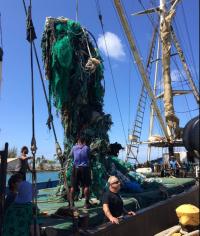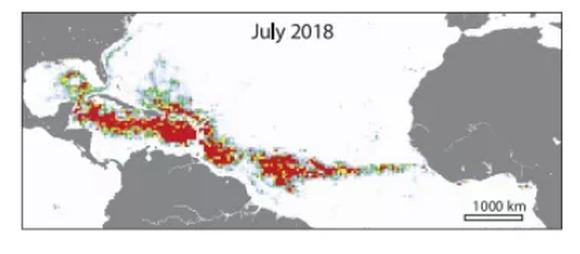 Floating mats of Sargassum seaweed in the center of the North Atlantic were first reported by Christopher Columbus in the 15th century. These mats, although abundant, have, until recently, been limited and scattered. In recent years that has changed dramatically. A new study by Mengqiu Wang and her colleagues from the University of South Florida, published in the journal Science, documents the formation of a massive mat of Sargassum seaweed stretching from West Africa to the Gulf of Mexico.
Floating mats of Sargassum seaweed in the center of the North Atlantic were first reported by Christopher Columbus in the 15th century. These mats, although abundant, have, until recently, been limited and scattered. In recent years that has changed dramatically. A new study by Mengqiu Wang and her colleagues from the University of South Florida, published in the journal Science, documents the formation of a massive mat of Sargassum seaweed stretching from West Africa to the Gulf of Mexico.
Last summer, the floating mat formed an 8850-kilometer-long belt of the brown buoyant seaweed, estimated to weight more than 20 million tons. The growth of what the authors of the study refer to as the Great Atlantic Sargassum Belt has been recorded by satellite imagery showing a dramatic increase in the size of the floating seaweed mats over the past 20 years. The researchers say that this Sargassum belt represents the world’s largest macroalgal bloom and that such recurrent blooms may become the new normal.

 If you are near New York harbor on Saturday, July 13th, stop by the South Street Seaport, Piers 16 and 17, from 10AM to 4PM, to help celebrate
If you are near New York harbor on Saturday, July 13th, stop by the South Street Seaport, Piers 16 and 17, from 10AM to 4PM, to help celebrate 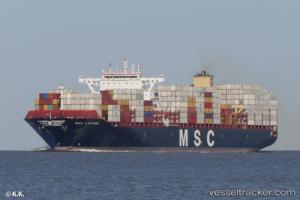 Recently, we posted about the MSC Gayane, the container ship seized on Monday by US Customs following a $1.3 billion cocaine bust last month in Philadelphia. We said that the ship was not owned by Mediterranean Shipping Company (MSC) but by a shipping fund controlled by JP Morgan. We based this on a Fairplay article from October reporting the sale of the ship from SinOceanic.
Recently, we posted about the MSC Gayane, the container ship seized on Monday by US Customs following a $1.3 billion cocaine bust last month in Philadelphia. We said that the ship was not owned by Mediterranean Shipping Company (MSC) but by a shipping fund controlled by JP Morgan. We based this on a Fairplay article from October reporting the sale of the ship from SinOceanic. On July 5, in a very close race, the schooner
On July 5, in a very close race, the schooner 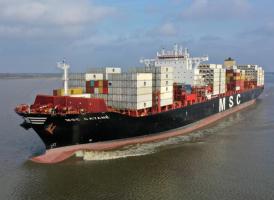
 The financial crisis that threatened to shut down the
The financial crisis that threatened to shut down the  The yeast from a
The yeast from a 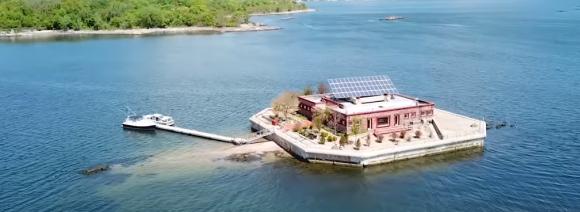 Looking for a private island getaway within a reasonable commuting distance of New York City?
Looking for a private island getaway within a reasonable commuting distance of New York City?  If you are around New York harbor on Sunday, there is a wonderful opportunity to hear and join in singing sea chanteys as they were meant to be sung, onboard a windjammer. The chantey sing will aboard the restored 1885 built flagship of the seaport,
If you are around New York harbor on Sunday, there is a wonderful opportunity to hear and join in singing sea chanteys as they were meant to be sung, onboard a windjammer. The chantey sing will aboard the restored 1885 built flagship of the seaport,  Happy 4th of July to all. Here is lightly updated repost appropriate for the day.
Happy 4th of July to all. Here is lightly updated repost appropriate for the day. On July 2,
On July 2, 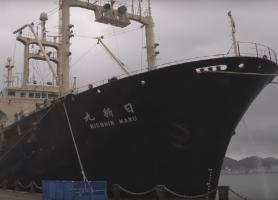 Japan has withdrawn from the International Whaling Commission, and the Japanese whaling fleet has abandoned their so-called “research whaling” to resume
Japan has withdrawn from the International Whaling Commission, and the Japanese whaling fleet has abandoned their so-called “research whaling” to resume After completing his
After completing his  Last November, the Norwegian navy frigate,
Last November, the Norwegian navy frigate, 

 On Friday afternoon, I headed over to North Cove in Lower Manhattan to watch the New York races of Sail GP. Sail GP is a global racing circuit of cutting edge one-design 15-meter-long foiling catamarans. The boats themselves are repurposed and upgraded versions of America’s Cup racers from Bermuda on 2017. The six teams are drawn from around the world. On Friday, only five would make the race as the British team got caught by a gust, capsized and broke the top section of their wing mast. (I am sure there is a Brexit joke in there somewhere, but I will leave it alone.)
On Friday afternoon, I headed over to North Cove in Lower Manhattan to watch the New York races of Sail GP. Sail GP is a global racing circuit of cutting edge one-design 15-meter-long foiling catamarans. The boats themselves are repurposed and upgraded versions of America’s Cup racers from Bermuda on 2017. The six teams are drawn from around the world. On Friday, only five would make the race as the British team got caught by a gust, capsized and broke the top section of their wing mast. (I am sure there is a Brexit joke in there somewhere, but I will leave it alone.)